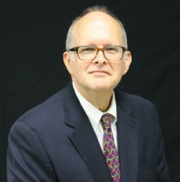November 2018 – This Month in Sacramento
THIS MONTH IN SACRAMENTO – NOVEMBER 2018 NEWSLETTER
Legislative Update
by Richard Markuson
Region 9 Legislative Advocate

State Legislation
Nothing new probably until the February issue.
New Reports of Interest
Stanford Water in the West released Guide to Compliance with California’s Sustainable Groundwater Management Act. “Local agencies in critically over-drafted groundwater basins in California have less than a year and a half to draft their plans to achieve sustainable groundwater management. [They] … will need to avoid six specified ‘undesirable results’ ranging from seawater intrusion and degraded water quality to land subsidence. A new report … guides these agencies through how to understand and comply with the requirement that GSAs (Groundwater Sustainability Agencies) must not cause ‘significant and unreasonable adverse impacts on beneficial uses of surface water.’… To help agencies navigate how to interpret (California’s 2014 Sustainable Groundwater Management Act or SGMA), the report reviews state and federal laws, regulations and other resources that provide guidance on the issue.”
The Applied Technology Council, for the City and County of San Francisco released Tall Building Safety Strategy. Commissioned by the City of San Francisco in 2017, this study of buildings over 240 feet in San Francisco has raised concerns about inadequate inspections of certain types of steel framed buildings after the 1989 Loma Prieta earthquake. At the time of the earthquake, it was not yet understood that “steel moment frames” are particularly susceptible to fracture. In addition to a re-inspection of all such steel framed buildings, the report makes 15 other recommendations in order to reduce seismic risk.
The CA Dept. of Water Resources has released its annual water year report, “Water Year 2018: Hot and Dry Conditions Return,” says “despite below-average precipitation in water year 2018, most California reservoirs are storing near- or above-average levels of water heading into the 2019 water year,” which runs from October 1, 2018 to September 30, 2019.
The UC Berkeley Center for Law, Energy & the Environment released When is Groundwater Recharge a Beneficial Use of Surface Water in California? Current state law requires a permit from the State Water Resources Control Board to divert surface water for groundwater recharge. The current lack of specific guidance for qualifying recharge purposes creates uncertainty and acts a disincentive for entities seeking to undertake some recharge projects, including non-extractive uses “combatting subsidence, raising regional groundwater levels, or supporting baseflow or ground-water dependent wetlands.” The authors of this report argue that the state could promote greater investment and activity in groundwater recharge by issuing further guidance regarding when and how such projects qualify as beneficial uses.
The San Francisco Transportation Authority released TNCs & Congestions. Congestion in San Francisco significantly worsened between 2010 and 2016. Based on monitoring data from the SF Transportation Authority’s Congestion Management Program, peak arterial speeds decreased by 26% for morning commutes, and by 27% in the evening. On a typical weekday, total vehicle hours of delay increased by 40,000 hours, and vehicle miles travelled increased by over 630,000 miles. “[Transportation network companies, or TNCs] accounted for approximately 50% of the change in congestion in San Francisco between 2010 and 2016, as indicated by three congestion measures: vehicle hours of delay, vehicle miles travelled, and average speeds. Employment and population growth—encompassing citywide non-TNC driving activity by residents, local and regional workers, and visitors—are primarily responsible for the remainder of the change in congestion.
Appointments
Governor Brown appointed To the Board for Professional Engineers, Land Surveyors and Geologists: Duane Friel, Temecula, Democrat, district representative for the International Union of Operating Engineers since 2018.
